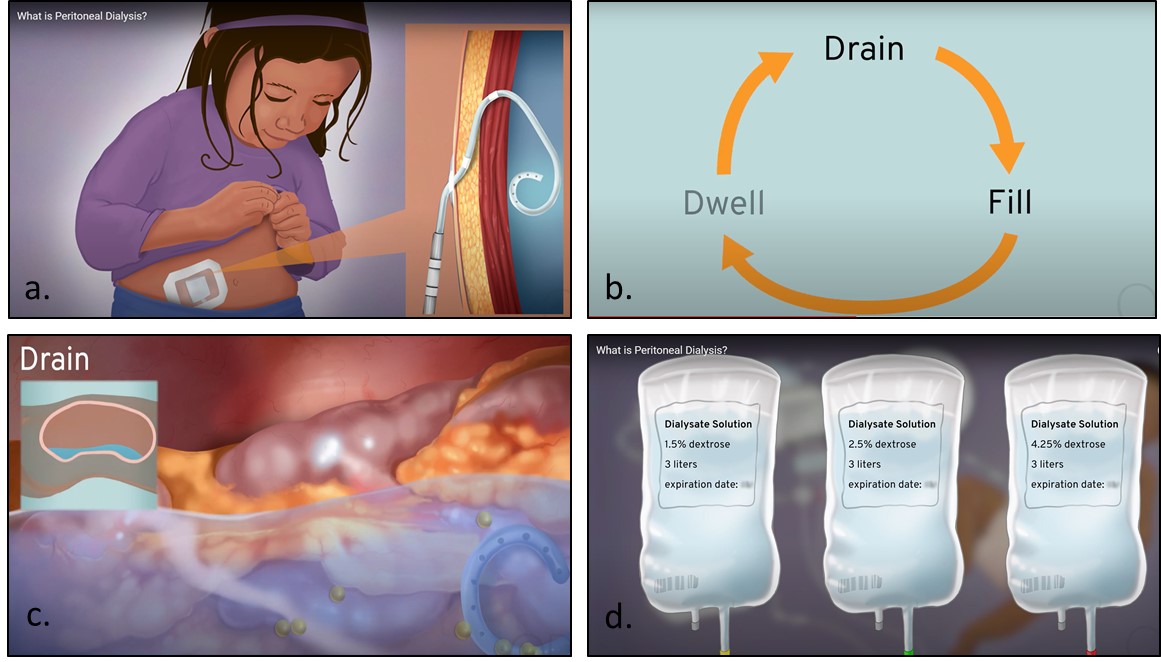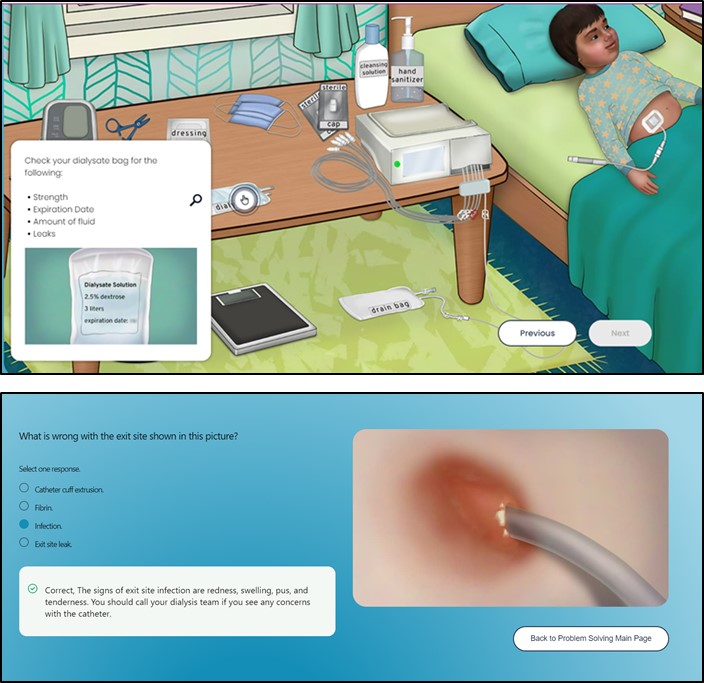Nephrology: Dialysis
Nephrology 3: Dialysis and Diversity and Equity in Kidney Health
281 - Improving Dialysis Access for Families: Development of an Open-Access Online Pediatric Peritoneal Dialysis Teaching Program
Publication Number: 281.252
- KO
Kaitlyn Order, MD (she/her/hers)
Fellow
Boston Children's Hospital-GME - - Boston, MA
Boston, Massachusetts, United States
Presenting Author(s)
Background:
Peritoneal dialysis (PD) is the preferred modality of chronic dialysis for children with ESRD worldwide, especially in resource-limited areas. PD delivered at home is patient-centered and optimizes quality of life. There is little research on educational interventions for caregivers to facilitate home PD.
Screen- and manikin-based simulation have been shown to be effective means of training medical staff, and efforts using manikin-based simulation to train lay caregivers demonstrate success for chronic illnesses such as tracheostomy dependence.
Objective:
We aimed to develop a screen-based teaching tool using principles of simulation designed to teach home PD to patients and caregivers.
Design/Methods: We convened a multi-professional team of pediatric nephrologists, medical educators, video editors, medical animators, and software developers. We outlined learning objectives and developed a script to teach the fundamentals of PD to a lay audience. We used the Dale-Chall readability formula to assess the reading level. We asked nurses, caregivers and nephrologists outside our institution to peer review the script prior to development of the teaching tool.
Results: Our script was revised with peer review edits and modified until we achieved our goal of a 6th grade reading level. We then created animated videos using 3D models and custom graphics to depict critical concepts related to PD. Working closely with our software developers, we used deliberate practice and mastery learning, often used in simulation training, as theoretical frameworks to develop an interactive learning experience. Adherence to best practices in multimedia and instructional design were also utilized. We created a series of interactive tasks to teach key concepts and techniques of performing home PD. We then designed realistic patient scenarios designed to teach and test problem solving skills for common issues that arise. Figures 1 and 2 highlight a sample of animated videos, interactive tasks, and patient scenarios.
Conclusion(s):
Our novel and interactive teaching tool was released on OPENPediatrics. We hope it will serve as a valuable resource for caregivers to learn the complexities of home PD provision and ease transition to the home environment especially in families with limited literacy.
Our next steps involve an assessment of the efficacy of the simulator to educate caregivers. We anticipate this tool will decrease in-hospital training time and improve knowledge and satisfaction. We also aim to investigate clinical outcome measures including days to discharge after initiation of PD and hospitalization rates. 

